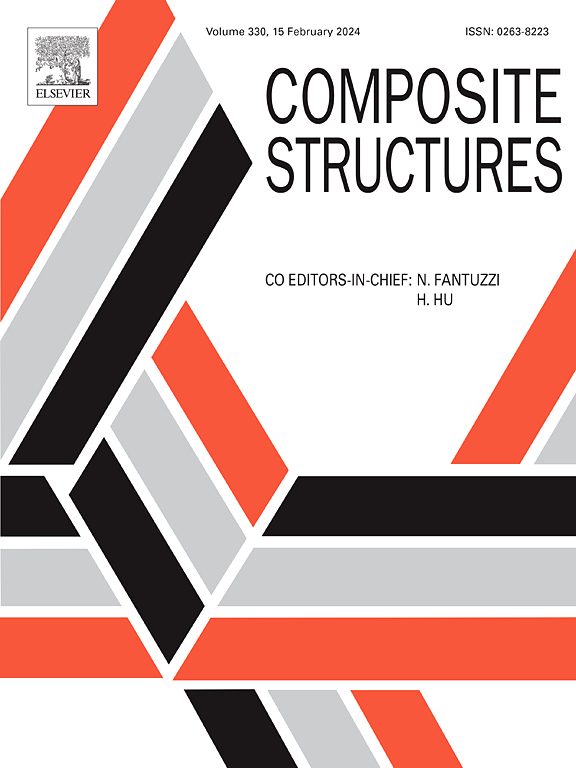Differential evolution algorithm and artificial neural network surrogate model for functionally graded material homogenization and design
IF 6.3
2区 材料科学
Q1 MATERIALS SCIENCE, COMPOSITES
引用次数: 0
Abstract
In this paper, the differential evolution (DE) algorithm is employed to design functionally graded materials (FGMs). The design problem is formulated as a constrained optimization, where the objective function represents the global requirements of the macroscopic boundary value problem (BVPm), and the constraints account for the feasibility (or manufacturability) of the generic microstructure. During optimization, the local constitutive behavior of the material, such as the components of the anisotropic effective stiffness tensor, is derived using homogenization theory, which involves solving the microscopic boundary value problem (BVPµ). Both the macro and micro problems are solved using the finite element method. To accelerate computations, artificial neural networks (ANNs), trained with pre-computed homogenization data, are used as a surrogate homogenization model for the FGM optimization process. The examples presented demonstrate that using ANNs can reduce the optimization effort by several orders of magnitude, even when accounting for the computational cost of database preparation and ANN training. The proposed approach for designing FGMs has proven to be both efficient and reliable for the considered generic microstructure and example global problems. Moreover, the method is general enough to be applied to more complex microstructures and diverse global requirements.
求助全文
约1分钟内获得全文
求助全文
来源期刊

Composite Structures
工程技术-材料科学:复合
CiteScore
12.00
自引率
12.70%
发文量
1246
审稿时长
78 days
期刊介绍:
The past few decades have seen outstanding advances in the use of composite materials in structural applications. There can be little doubt that, within engineering circles, composites have revolutionised traditional design concepts and made possible an unparalleled range of new and exciting possibilities as viable materials for construction. Composite Structures, an International Journal, disseminates knowledge between users, manufacturers, designers and researchers involved in structures or structural components manufactured using composite materials.
The journal publishes papers which contribute to knowledge in the use of composite materials in engineering structures. Papers deal with design, research and development studies, experimental investigations, theoretical analysis and fabrication techniques relevant to the application of composites in load-bearing components for assemblies, ranging from individual components such as plates and shells to complete composite structures.
 求助内容:
求助内容: 应助结果提醒方式:
应助结果提醒方式:


